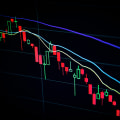The practice of backtesting strategies with historical data has been a valuable tool for financial traders and investors for many years. By leveraging historical market data, investors can test their trading strategies to see if they are successful before risking their own capital. This article will explore the benefits of backtesting strategies with historical data, and how it can be used to maximize success with binary options. Backtesting allows traders to simulate trading in a live market environment, giving them the opportunity to test out their strategies without actually having to risk any real money. By understanding the historical data, traders can observe how their strategies would have performed under different market conditions and make adjustments as needed.
Additionally, backtesting allows traders to gauge the risk/reward ratio of their strategies and determine whether or not they are suitable for their trading goals. In this article, we will provide an overview of the benefits of backtesting strategies with historical data and how it can be used to improve trading performance. We will discuss the importance of understanding the different types of data available, as well as the advantages and disadvantages of using backtesting to evaluate trading strategies. Backtesting is the process of testing a strategy using historical data. It involves simulating how a strategy would have performed in the past using data from a specific period. This allows traders to assess the effectiveness of a strategy without risking any capital.
Backtesting also provides an opportunity to identify any flaws in the strategy, such as issues with entry and exit points. By testing a strategy over a period of time, traders can gain insight into which markets, time frames and trading conditions are most likely to be profitable.
What is Backtesting?
Backtesting is the process of testing a trading strategy using historical data. Backtesting can be done manually or by using automated software. Manual backtesting requires the trader to analyze and interpret the data themselves.Automated backtesting software uses algorithms to analyze the data and provide results more quickly.
Benefits of Backtesting
Backtesting can help traders assess potential strategies before investing in them. It provides traders with an opportunity to identify any issues with their trading plan that could lead to losses in the future. Backtesting also allows traders to test their strategy on different markets, time frames and trading conditions, giving them a better understanding of which conditions are most likely to be profitable. Additionally, backtesting can help traders identify any issues with their entry and exit points.How to Backtest Strategies
When backtesting a strategy, it is important to consider the amount of data available, as well as the accuracy of the data.If there is not enough data available, the results may not be accurate. Additionally, it is important to consider how long the data covers and whether it takes into account any changes in market conditions during that period. Once these considerations have been taken into account, traders can begin backtesting their strategies using either manual or automated methods.
Examples of Backtesting Strategies
There are a variety of backtesting strategies that can be used, depending on the trader’s goals and objectives. Some examples include:- Moving Average Crossover: This strategy uses two moving averages (short-term and long-term) to identify potential entry and exit points.
- Price Pattern Recognition: This strategy attempts to identify repeating price patterns in order to predict future price movements.
- Bollinger Bands: This strategy uses Bollinger Bands – three lines that measure volatility – to identify potential entry and exit points.
By testing a strategy over a period of time, traders can gain insight into which markets, time frames and trading conditions are most likely to be profitable. Additionally, backtesting can help traders identify any issues with their trading plan that could lead to losses in the future.
Benefits of Backtesting
Backtesting strategies with historical data is a powerful tool for traders looking to maximize their success when trading binary options. It can provide traders with valuable insights about the markets and help them identify potential trading opportunities. Backtesting has several key advantages that can help traders make better decisions and increase their chances of success.Risk Management:
Backtesting allows traders to assess the risk of their strategies before investing their own money.It allows traders to see how their strategies have performed in the past, providing them with an indication of how they might perform in the future. By using backtesting, traders can also identify potential risks and adjust their strategies accordingly to reduce or eliminate these risks.
Strategy Evaluation:
Backtesting can also be used to evaluate a trading strategy before implementing it. Traders can use backtesting to determine whether or not a strategy is likely to be profitable and if it is suitable for their trading style and risk tolerance. By backtesting a strategy, traders can gain a better understanding of how the strategy works and how it could potentially be used for trading.Trading Opportunities:
Backtesting can also help traders identify potential trading opportunities.By analyzing historical data, traders can identify patterns and trends that may indicate potential trading opportunities. For example, a trader may be able to identify a specific currency pair that is likely to move in a certain direction based on its past performance. By backtesting, traders can gain a better understanding of the markets and identify potential trading opportunities. Backtesting strategies with historical data is an essential tool for traders looking to maximize their success when trading binary options. It can help traders assess risk, evaluate strategies, and identify potential trading opportunities, allowing them to make more informed decisions and increase their chances of success.
What is Backtesting?
Backtesting is the process of testing a trading strategy on historical data.It allows traders to assess the effectiveness of a potential strategy before investing any real money. Backtesting enables traders to see how their strategy would have performed in different market conditions, and to determine if it is likely to be successful in the future. Backtesting strategies with historical data is an important tool for traders, as it can help them identify potential strategies that are likely to be profitable. By testing strategies on historical data, traders can gain insight into which strategies are most likely to be successful, and can adjust their strategy accordingly.
It is important for traders to use backtesting when developing a trading strategy, as it can help them determine the effectiveness of a potential strategy before investing any real money. By testing strategies on historical data, traders can gain a better understanding of how their strategy may perform in different market conditions. Backtesting also enables traders to identify potential risks associated with a particular strategy. By testing a potential strategy on historical data, traders can gain insight into how the strategy may behave when exposed to different market conditions.
This can help traders identify potential risks and develop more effective strategies. Backtesting strategies with historical data is an important tool for traders looking to maximize success when trading binary options. Backtesting also enables traders to identify potential risks associated with a particular strategy, and helps them develop more effective strategies.
Examples of Backtesting Strategies
Backtesting is a powerful tool to help traders identify successful strategies and make better-informed decisions when trading binary options. It involves running a strategy against historical data to determine the profitability of the strategy.There are many examples of successful backtesting strategies that can be used to maximize success with binary options. One example of a backtesting strategy is the use of trend lines. Trend lines are used to identify price changes over time, as well as support and resistance levels. By running a strategy against historical data, traders can identify areas where prices tend to move in a certain direction and use this information to inform their trading decisions.
Another example of a backtesting strategy is the use of technical indicators. Technical indicators are used to identify areas of potential price movement, such as overbought or oversold conditions. By running a strategy against historical data, traders can identify areas where the indicator is likely to generate a profitable signal and use this information to inform their trading decisions. Finally, traders can use backtesting to test out various risk management strategies.
Risk management is an important part of trading binary options and by running a strategy against historical data, traders can identify areas where they should increase or decrease their exposure to risk in order to maximize their profits.
How to Backtest Strategies
Backtesting strategies with historical data is a powerful way to maximize success when trading binary options. This article will discuss how to backtest strategies, the process step-by-step, and some examples of tools that can be used.Step 1: Collect the Historical Data
The first step in backtesting a strategy is to collect the historical data.This data should include information about the asset’s price, volume, and other relevant variables. This data can be found on a variety of websites, including financial portals and broker websites.
Step 2: Choose a Time Frame
The next step is to choose a time frame for the backtesting. A trader may choose to backtest a strategy over the past month, quarter, or year depending on their goals and objectives.The time frame should be long enough to capture enough data to be able to draw meaningful conclusions.
Step 3: Choose a Backtesting Tool
Once the historical data is collected and the time frame has been chosen, the next step is to select a backtesting tool. There are a variety of software packages available that allow traders to backtest their strategies with historical data. These tools can be used to analyze how a strategy would have performed in different market conditions, and can help traders identify weaknesses or opportunities in their trading approach.Step 4: Run the BacktestThe last step in backtesting is to run the test. The backtesting tool will take the data and apply the strategy over the chosen time frame to generate results. These results can then be compared against market performance over the same period of time to determine if the strategy was successful.
Conclusion
Backtesting strategies with historical data is a key way to maximize success when trading binary options.By understanding how to backtest strategies, traders can assess potential strategies before investing and identify opportunities or weaknesses in their approach. Backtesting strategies with historical data is an essential part of maximizing success when trading binary options. By using backtesting, traders can gain insight into potential strategies and identify any flaws that could lead to losses. Backtesting enables traders to assess a strategy’s potential performance under different market conditions before committing funds to it.
As a result, traders can test out different strategies and make informed decisions about which ones are the best for their individual needs. Backtesting is an invaluable tool for any trader looking to maximize their success with binary options. By taking the time to backtest potential strategies, traders are able to save time and money in the long run by avoiding strategies that are likely to fail.






